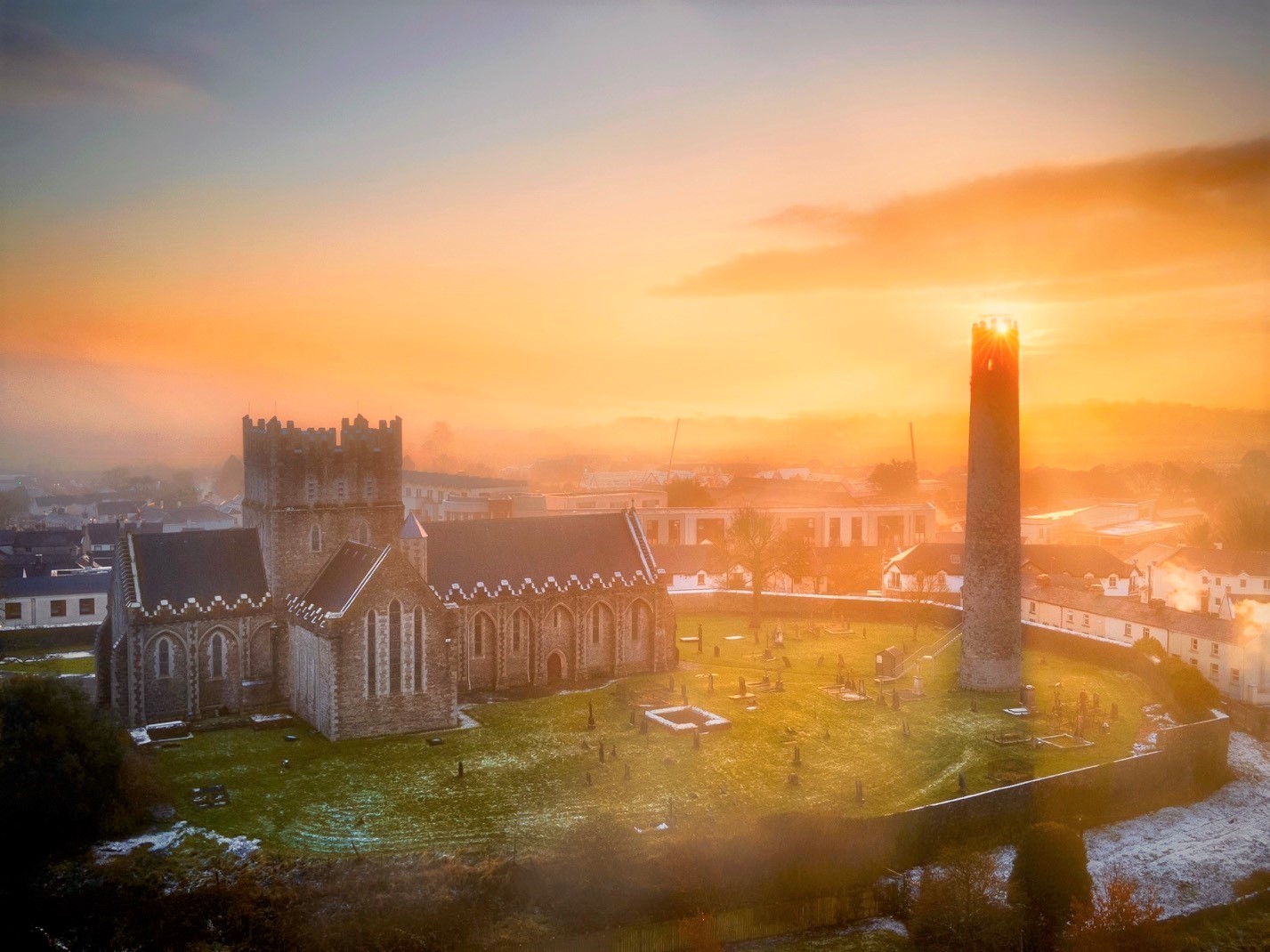|
Getting your Trinity Audio player ready...
|
Above: Saint Brigid’s Cathedral and Kildare as seen from the round tower.
Three Saints one grave do fill:
Patrick, Brigid, and Columbkill
On a recent trip to Ireland, I fell in love once more with the Emerald Isle, from whom, if both records and DNA can be trusted, a great many of my ancestors emerged. As so many times before, I saw as much of it as I could see, even places not seen before, from Glendalough to Skibbereen. Although my taste for Ireland and the Irish was somewhat diminished in recent years by the referenda in which two thirds of the population voted for abortion and same-sex “marriage,” my spirits were buoyed on this trip by their overwhelming rejection of the latest woke referendum – a chilling blow to the Dublin elite – if one can call such a sorry group by that name.
The dear old Isle of Saints and Scholars has a powerful hold on the Anglophone Catholic World. Few of us in New York or Los Angeles or Toronto or Vancouver or Melbourne or Auckland haven’t felt the tug of the Auld Sod on St. Patrick’s Day – even if we haven’t a drop of Irish blood. But this year I spent St. Patrick’s Day outside of Dublin, not wanting to sample the madness of what was once quite a day in the Irish Capital. I went to Kildare, famed home of the “Mary of the Gael,” St. Brigid, instead.
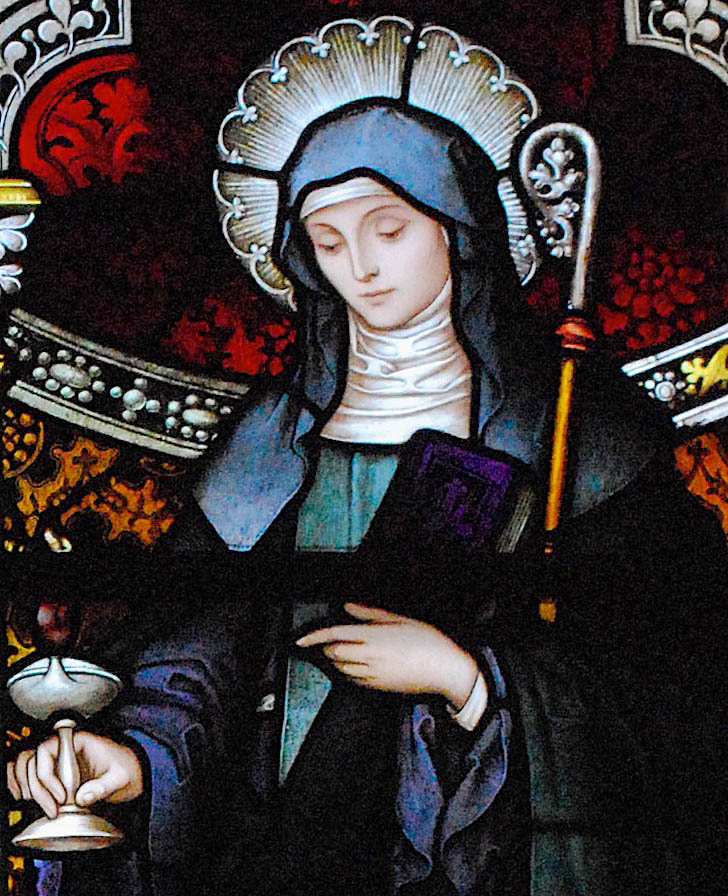
St. Brigid or Bridget of Ireland (451-525) is, together with Ss. Patrick and Columba (Columbkill), one of the three great patron Saints of the country, with whom, as the old poem tells us, once shared a grave in Downpatrick. An Irish princess, she sought the religious life, refusing a marriage arranged for her by her father. She started a convent at Kildare, where was lit a votive flame that would be attended by her and her successors until the destruction of the monastery at the Protestant Revolt. Her life is filled with many miracles, which the materially minded like to pass off as “mere” legends, the better to safeguard their worldviews. But devotion to her was widespread throughout the British Isles; as with St. Patrick, there is a tradition of her spending time at Glastonbury.
Her feast day is February 1, and one of the many customs associated with it is the making of “Brigid’s Crosses.” St. Brigid’s intercession was renowned for the needs of the common folk, rather than great matters of state. A lover of water, she blessed many a well in Ireland, and down to the present the faithful come to lay their immediate problems before her. In truth, there was no female saint more beloved the entire length and breadth of Ireland and in a number of places in Great Britain – even London has a church whose origins date back to the 700s, St. Bride’s, Fleet Street.
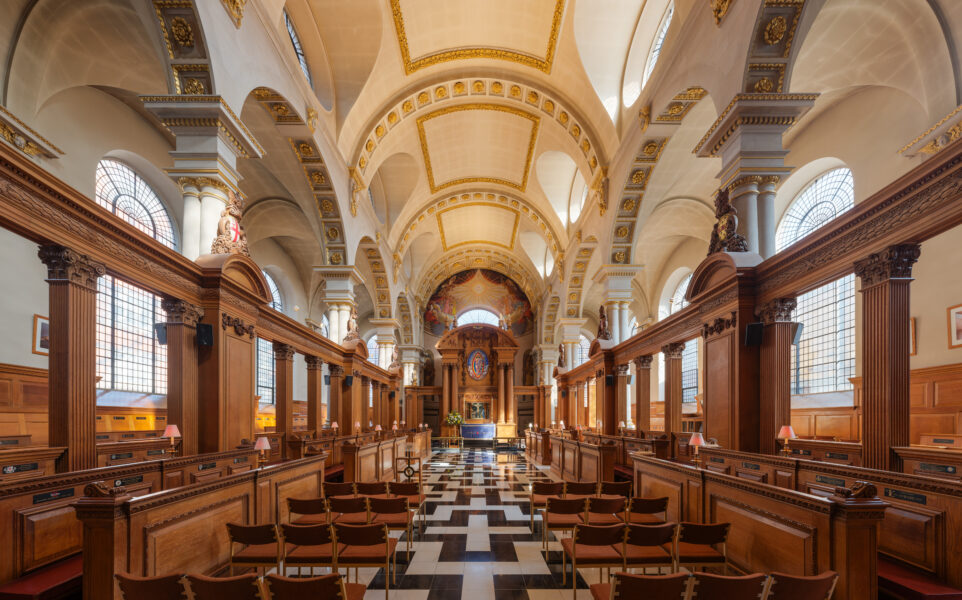
But as the earlier noted referenda indicate, the Catholic Ireland of yore is no more. In place of the omnipresence of the Faith has seeped in the New Age, Neo-Paganism, and Wicca – three similar but distinct artificial faiths, created by various persons in the 19th and 20th centuries. Given that many Christian customs were redeemed from paganism long ago, the adherents of these religions often seek to reverse the process, despite the inauthentic nature of the results. Nowhere is this process more obvious than in Ireland, and with nothing so much as the cultus of St. Brigid.
For starters, she shares a name with a pagan goddess. Now, conflating the two is a bit like combining St. Martin of Tours with Mars, the Roman god of war – after all, they were both soldiers, and the name of the one is a derivative of the other. Needless to say, this would be a terrific historical misuse of St. Martin’s memory – but never mind; if it serves a purpose, that is all that is required. One of the major pagan Celtic feasts, Imbolc, fell on February 1, the day St. Brigid died, which is enough for Neopagans to annex her. Worse still, since the eves of major holy days were associated with weird legendry, it helped the Wiccans that the feast is also Candlemas Eve. Her votive fire can be attributed to lingering fire worship on her part.
Solas Bhride Centre, run by a lovely pair of un-habited Brigidine sisters, is the home of a “renewed” flame. According to the Centre’s website,
Brigid was born at a time of major transition in 5th century Ireland. She embodies in herself the pre-Christian Celtic and Christian Celtic spirit. It is generally accepted that St Brigid built her double monastery for men and women in Kildare around 470AD. Some scholars credit Brigid with pioneering monastic life in Ireland. Her monastery was acclaimed as a centre of education, pilgrimage, worship and hospitality until the 16th century when all the monasteries were suppressed.
The site goes on to explore the role of St. Brigid as a pioneer of women’s rights and “social and ecological justice.” They are not unaware of her links with Glastonbury, whose own deep Christian history has been overlaid with the New Age over the past century. In 2004, the Brigidine sisters, Mary and Rita Minehan, “brought the perpetual Brigid flame (restored in 1993) from Solas Bhride, in Kildare, during a Glastonbury Goddess Conference ceremony on Bride’s Mound,” the place where she is believed to have stayed. To be sure, there is a certain amount of truth in this presentation – but it lends itself to misuse, and it would be hard to reconcile a “Glastonbury goddess” with the Mary of the Gael. At any rate, the place has expanded tremendously since I visited Kildare last in 2005.
Our visit to St. Brigid’s Well in Kildare was bittersweet, in the sense that there was a combination of New Agery and the traditional Catholic practise in that hallowed site. There were a few clooties (rags), which are traditionally placed at Holy Wells as symbols of prayer – rather like candles in front of statues in churches. There were a few rosaries and holy statues as well; but missing were the posted instructions as to how to pray at the site – using the Rosary – that I remembered from my first visit.
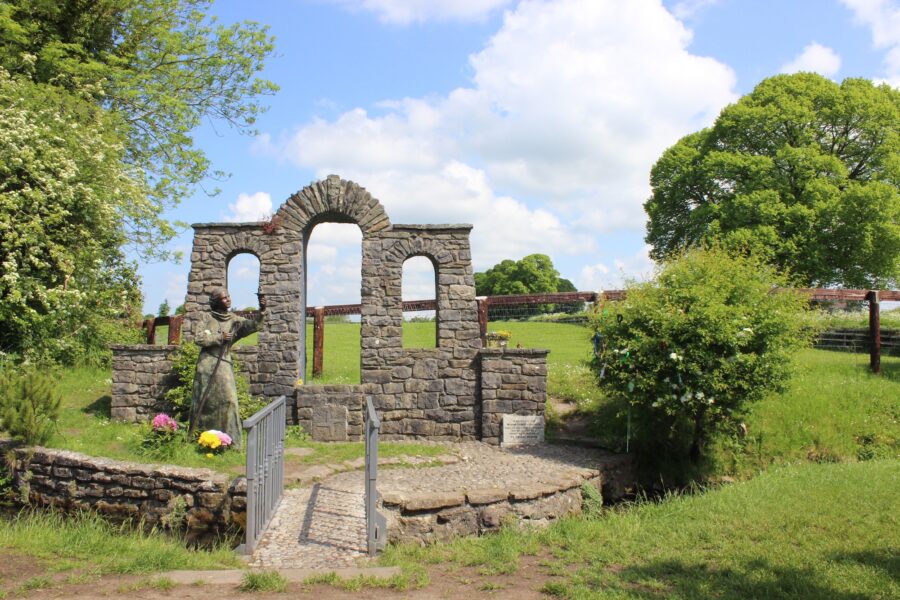
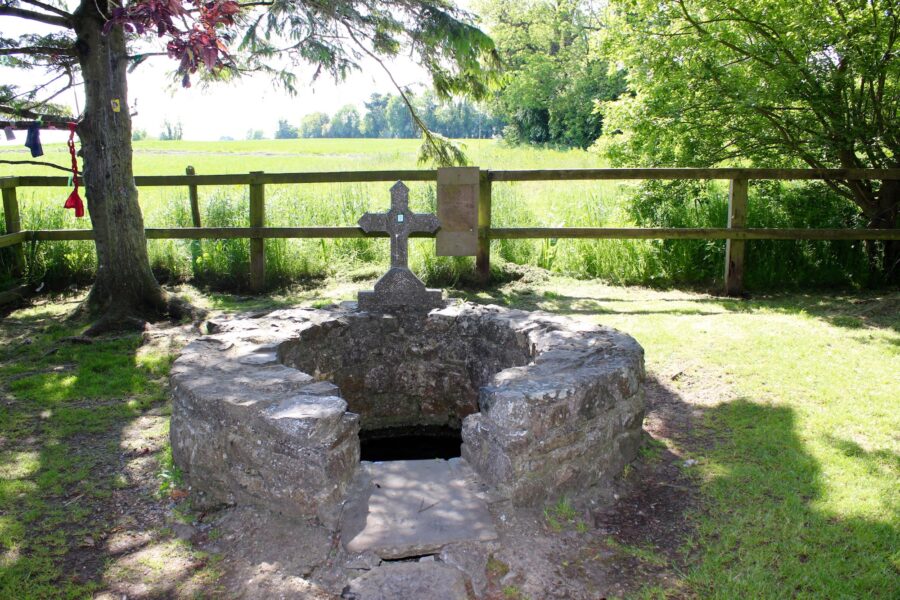
From there we visited the beautiful chapel at the Royal and Pontifical College of St. Patrick at Maynooth, and then drove off to the Rock of Cashel and the South.
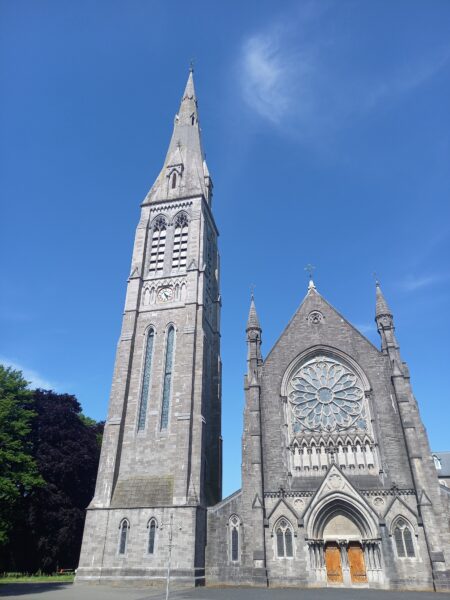
The next few days brought us to Cork and Cobh (the steeple of whose St. Colman’s Church was often the last site of Ireland seen by emigrants bound for America), Skibbereen, and Tralee. Around the Dingle Peninsula, we drove, and through a bit of the Ring of Kerry, astonished by the scenery brought with every turn of the road.
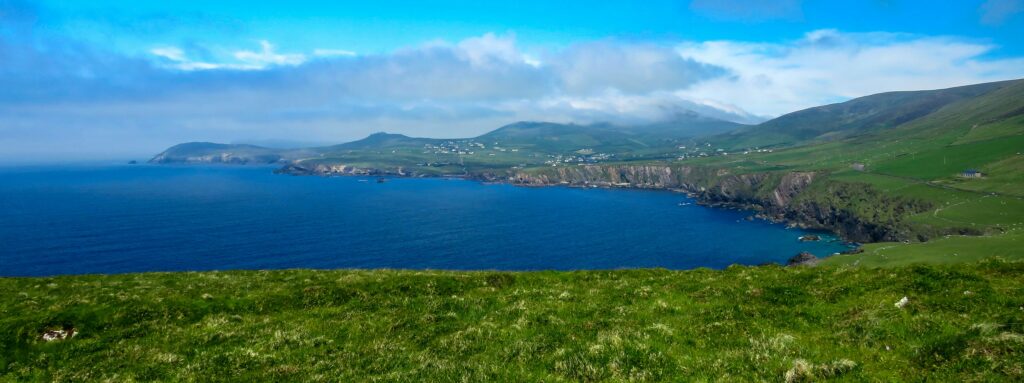
Up at last in County Clare to see the Cliffs of Moher, we were stymied by fog. But nearby in Dereen, the map assured us, was another well dedicated to St. Brigid. This we visited. There was no trace at the low grotto and adjoining cross of New Agery, but much evidence of the deep Catholic Faith of the locals. In the grotto, there were clooties, statues, rosaries, photographs, and written prayer requests in immense profusion. As it happened, during the course of the trip, I had been made aware of a personal problem. Since the poster board offered the prescribed prayers and procedures, we walked around the Cross and the statue of St. Brigid successively, praying. I vowed that if St. Brigid answered my prayer, we would visit St. Bride’s Church in London, and I would make it known to the best of my ability that she had answered my prayer. We set off, and within an hour I was notified by phone that the issue was resolved. Thus it is that here and now I thank her, the Mary of the Gael, publicly, for her help and intercession.
It was night-time, and we drove through the dark night of County Clare to Spancilhill, made famous by the song of the same name. Written about his hometown by Michael Considine, who died in California at age 23 in 1873, it epitomises all that the emigrants left behind. We said a prayer for the hapless poet at the Cross on Spancilhill mentioned in the song, and I reflected on the many years I have spent in California. Exile, after all, is exile.
We drove into Northern Ireland, and after a day spent seeing friends, we rapidly visited the two cathedrals in Armagh – the Anglican one on the site founded by St. Patrick and taken by Henry VIII, and the Catholic one, devastated after Vatican II. From thence we saw Hillsborough Castle, King Charles III’s Irish residence (a sort of replacement for Dublin Castle and the Viceregal Lodge in Phoenix Park, now the residence of the president of the Irish Republic). It was a short drive from there to Downpatrick; there, in the graveyard of the once Catholic, now Anglican cathedral, we prayed at that holy grave of Ss. Patrick, Brigid, and Columbkill. It was truly a moving experience.
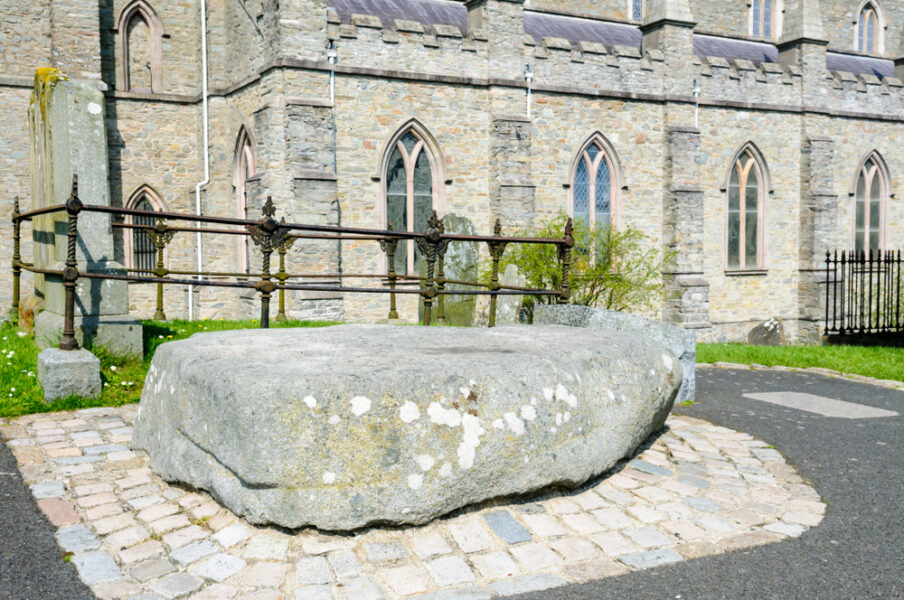
We set off once more and re-entered the republic. At Faughart is the National Shrine to St. Brigid. Once just a well like the others we had encountered, it has been vastly extended since the 1930s. There is a trail of prayers to be followed along a stream, beside which St. Brigid walked as a girl. From there we drove to the nearby parish church of St. Brigid in Kilcurry, approximately northwest of Dundalk in County Louth. It was built in 1896 in Neo-Gothic style; but it houses relics of St. Brigid, and these we venerated gladly.
The next day we went to St. Peter’s Church in Drogheda and venerated the head of St. Oliver Plunkett. From there, we drove into Dublin City. After walking by the GPO, we sat in the Oval Bar, chatting about all we had seen in Erin’s Green Isle. For the Catholic from the diaspora, the current state of Ireland is saddening, to say the least. But there are signs of hope to be sure – not least the fact that the friend who was with me had also had a pressing prayer well answered by St. Brigid.
We flew to Edinburgh and had two further weeks of adventures in Scotland and England. But we did not forget St. Brigid and prayed to her thankfully at St. Bride’s Fleet Street, in the ancient crypt of that Wren church. Although rebuilt after the Great Fire, its crypt chapel of St. Brigid has been in use since the place’s foundation. With that visit, and now this publication, I have fulfilled my vow to St. Brigid. But I urge devotion to her to everyone, Irish or not – although prayers for her own sweet homeland would no doubt be appreciated by her.
Above all, let us save St. Brigid from the fate that modern Ireland would condemn her to – as a mere figure of folklore, an image of Feminist environmentalism, or even a goddess. She lives on to-day in Heaven, interceding with God as she has for all these centuries. Whether in Ireland, Scotland, or even Glastonbury, let us pray at her shrines as Catholics, keeping the same Faith that she held. If we visit her fire at Kildare, let us remember that it has far more in common with an eternal votive light in front of the Blessed Sacrament than with any heathen torch illuminating less than it misleads.
The Celtic heritage – not just in Ireland, but in Scotland, Wales, Cornwall, the Isle of Man, Brittany, and even in those parts of the Continent where the language is gone but the Celtic folklore and love of Saints and fairies remain – is particularly targeted for cooptation by those of alternative spiritualities. To whatever degree we can, let us remember and remind others that it is not pagan, but as much of the Catholic birthright as anything in Latin, Germanic, or Slavic lands. Let us pray to Our Lord, Our Lady, and all the Saints of so many nations to bring them all back to the Church.

